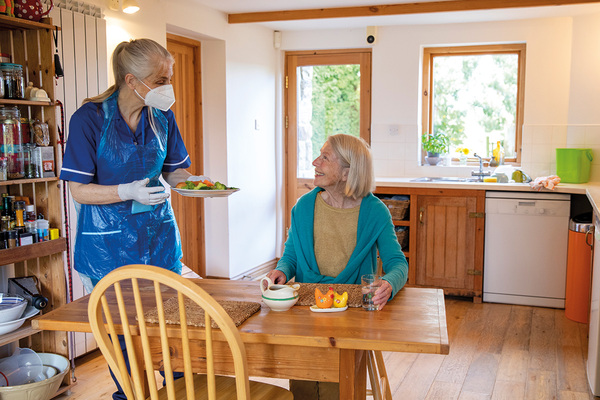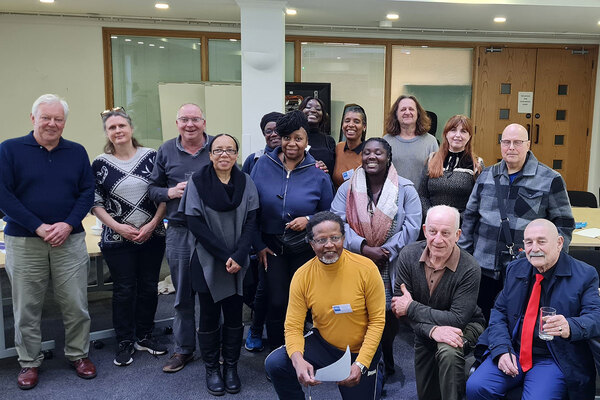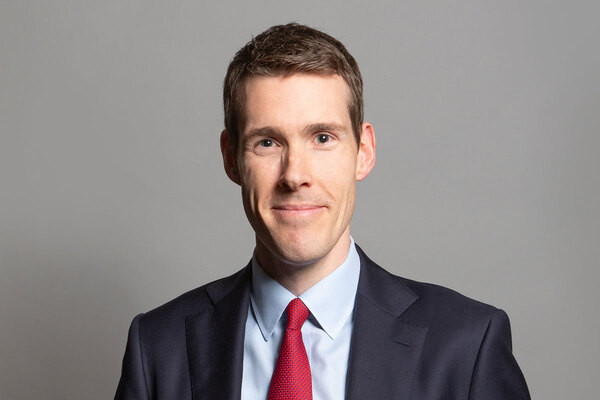Responding to vulnerabilities without stigma or marginalisation
Our latest Spotlight report examines how and why vulnerable residents can go unheard, writes housing ombudsman Richard Blakeway

A combined cost of living and housing crisis has put parts of the sector at breaking point, compounded by a narrow vision of what social housing is for – one that is far removed from its conception 150 years ago. This presents choices for government and society, as well as landlords and residents, about what sort of social housing the country wants.
Central to this is what it means to be vulnerable in social housing today, how landlords can respond effectively, and how to do so without stigma or marginalisation. Our latest Spotlight report examines how and why vulnerable residents can go unheard. Too often in our casework, residents’ vulnerabilities are missed or the response is inappropriate. Too often procedures that should adapt lack agility and staff are not empowered to deliver the right outcomes. These events can serve to exacerbate the imbalance of power that exists between the resident and landlord.
Today, while social housing provides diverse, vibrant and proud communities, more than half of households will include someone with a disability or long-term illness and 40% of social tenants report issues with mental health.
A failure over several decades to build enough social homes has led to issues such as overcrowding, which has made the living environment for some residents worse and the operating environment for landlords more difficult.
Inevitably, the notion of ‘general needs’ housing has changed, but general needs does not mean no needs. Nor are vulnerabilities static or necessarily obvious; grief, financial distress and literacy can create vulnerabilities. This is particularly true of mental health, where society’s understanding is evolving.
Looking ahead, volatility in the labour market, especially with technology and artificial intelligence, may create more fragile livelihoods for social tenants. So, the report proposes a ‘resident of the future’ analysis for the next 10 years, alongside a more embracing concept of vulnerability, based around individual circumstances, which holds no shame: it could happen to any of us, in any tenure, and at any time.
“General needs does not mean no needs. Nor are vulnerabilities static or necessarily obvious; grief, financial distress and literacy can create vulnerabilities”
This report presents three big themes. Foremost is greater recognition that social landlords cannot meet the needs of vulnerable residents alone. Progress requires a collective effort and far-reaching reform led by government, including a universal statutory definition of the term vulnerable and a renewed definition of general needs housing.
It requires better sharing of information between local authorities and housing associations. A statutory duty to co-operate with social landlords should be placed on other agencies such as health, social care and the police, because a landlord should not be a surrogate for those agencies if they retreat from communities and vulnerable households deserve effective partnership working.
While our report makes an emphatic case for government action, there are equally strong reoccurring lessons from our casework for the sector. Landlords must transform their vulnerable persons policy from a passive document to an embedded practice, testing it against the three Rs: recognise, respond and record. They must also be aware of the strong link that can exist between wider service failures, such as repair delays, the breakdown in trust and exacerbation of vulnerabilities.
Landlords must understand when an individual need becomes a right. Despite the evolution of general needs housing coinciding with the Equality Act, the Human Rights Act and the Care Act, I have found an inadequate understanding among some landlords of their obligations, as well as the interplay of this statute with the Landlord and Tenant Act and statutory hazards.
Meeting legal requirements should be the baseline, not the aspiration. There risks a lottery for residents, with recognition of rights dependent on the service area or whoever responds to the request or complaint.
Culture remains vital to embed this approach, as does communication. Landlords will know how the right actions can be undermined by poor communication, with 88% of staff telling us communication was a problem.
It’s also vital that landlords are confident their complaint procedure is accessible to vulnerable residents and they are aware of the ombudsman.
“Above all, we must re-establish the link between health and housing that is so apparent in our casework and the current debate about mould”
The report makes more than 20 practical recommendations, each based on a piece of good landlord practice we have seen in our casework.
Above all, we must re-establish the link between health and housing that is so apparent in our casework and the current debate about mould. Social housing arose from a Royal Commission that envisioned healthier lives as well as new homes, leading to transformative government-backed interventions, from council homes to garden suburbs. This was in 1885, and our report proposes a new commission to reimagine the future of social housing.
This commission would be independent from government and not impeded by politics. It could explore how social landlords can provide an innovative vehicle to engage residents with health issues and consider the role of public money, presenting a single view of welfare, health and housing spend, given the siloed approach that has existed across all governments for too long.
This sector was born out of societal change, and this housing crisis speaks to new social injustices in health, equality and race. I have met so many passionate professionals during the preparation of this report, who need the tools and resources to achieve the right outcomes for vulnerable residents.
However, I have also met residents who are desperate, in tears, suicidal and accusing the landlord of discrimination because it may have failed to keep its promises or respect them. There is a groundswell of anger and need which is not a media confection – it is often there in the complaints I see and every complaint I see the landlord has handled, too. Yet, ultimately, this is an optimistic report, because I think most social landlords can and want to rise to this challenge for the benefit of the country.
Richard Blakeway, housing ombudsman
Sign up for our care and support bulletin

Already have an account? Click here to manage your newsletters







